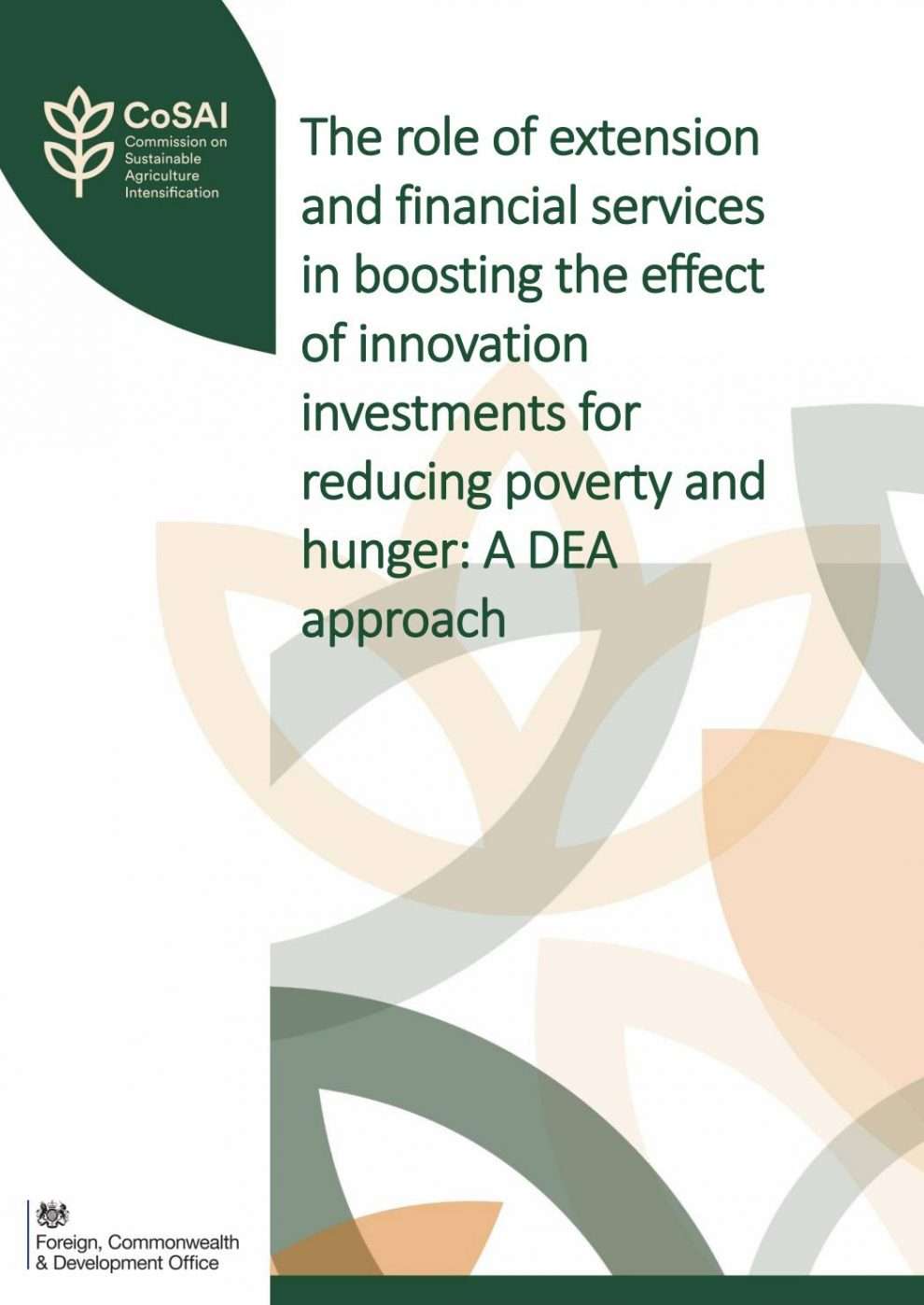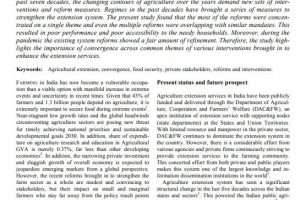Increasing investment and spending in agricultural innovation is not enough to meet Sustainable Development Goal (SDG) targets of ending poverty and hunger because the effectiveness of investments in low- and middle-income (LMI) countries is affected by the low quality of infrastructure and services provided, and by different norms and practices that create a considerable gap between financing known technical solutions and achieving the outcomes called for in the SDGs. As an important part of a nation’s common innovation infrastructure, financial and extension services are major “enablers” of investments, favorably contributing to national innovative capacity. However, the contribution of these services to innovation in LMI countries has been limited. Financial services in LMI countries face low rates of return; high risks and lack of acceptable collateral; and limited outreach in rural areas. Similarly, the performance of extension services has been affected by ineffective and costly strategies that have promoted rigid recommendations with poor understanding of how farmers learn and lacked context-specific focus on solving problems.
At present, a wide variety of information and communications technology (ICT) tools and innovations in financial and extension services offer new opportunities to improve performance, increase access and reduce costs through economies of scale and more efficient operations. Recent innovations in financial technology offer new ways of expanding the inclusion of the financially excluded into the financial system by providing them with a wider range of financial services and products; reaching sparse customer bases spread over difficult-to-access rural geography; reducing costs through economies of scale and more efficient operations; and enabling profitable inclusion of low-cost products or services that meet the needs of previously excluded populations. In the case of extension, the new ICT technologies can make services more demand-driven, up-to-date and inclusive, contributing to revitalizing the interaction between extension services and farmers.





Add Comment